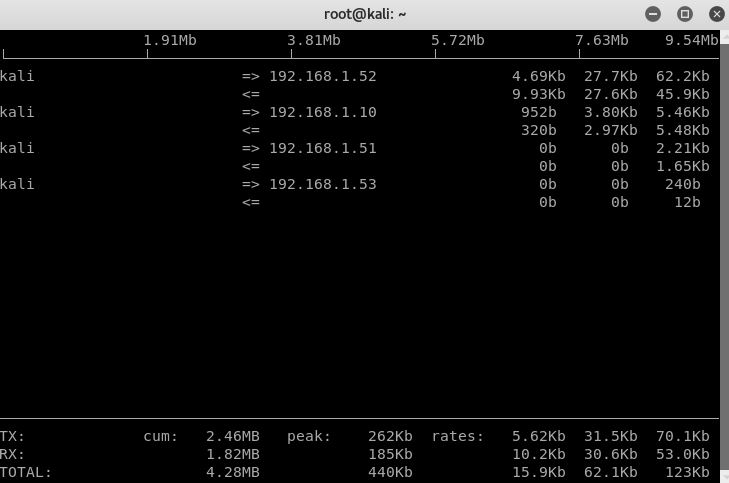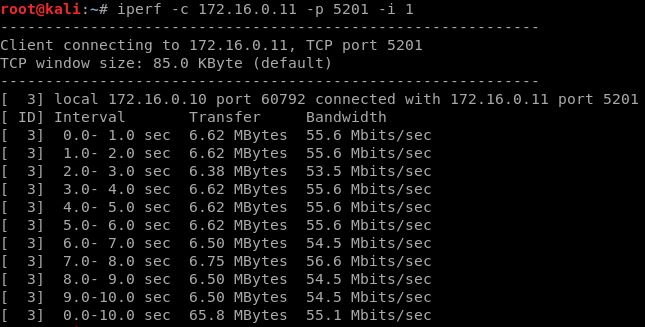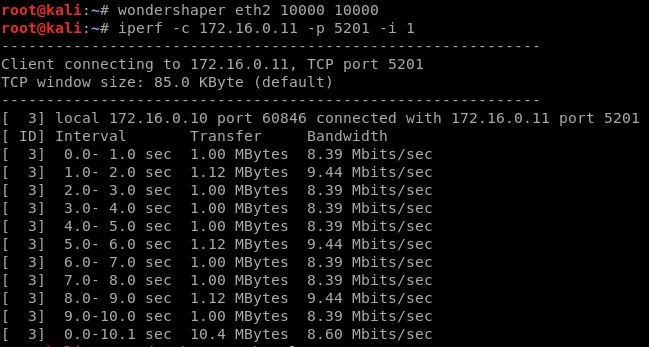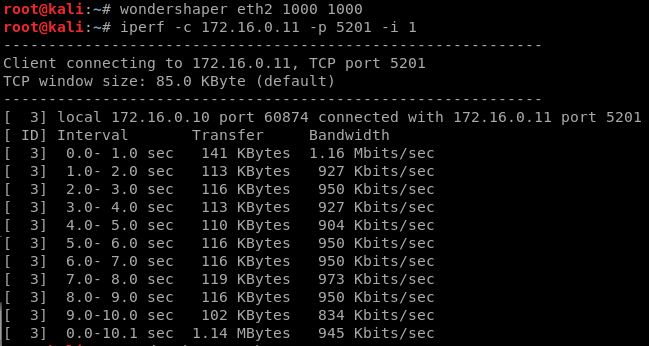In certain scenarios whilst pentesting there may be a requirement to control your bandwidth from your testing device, otherwise known as traffic shaping. In this post I will walk through how we can do some Traffic Shaping in Linux. All testers should be accountable for the amount of traffic they generate while testing. This is easily achievable in a few different ways, some better than others. I’ll walk through how we can achieve this in this post. It is always a good idea to log and monitor the amount of traffic you are sending and receiving. I will typically do this with ‘iftop’, I will open this before sending any traffic.
iftop looks like this:
Here we can see sent, received and total accumulation in the bottom left. In the bottom middle are the peak rates. Over to the right hand side we can see the transmission rates for 2, 10 and 40 second intervals. Couple of interesting toggle switches you can use while iftop is open being ‘h’ for help, ‘p’ to display port and ‘s’ and ‘d’ to hide/show source and destination.
On to the traffic shaping. In most Linux distros Tc (traffic control) is available, this can be used to configure traffic manipulation at the Linux kernel level. Tc is packaged with iproute2 the shiny new(ish) tool set for configuring networking in Linux.
In my view Tc is reasonably complex to configure if you simply need to reduce your bandwidth for an interface. Enter Wondershaper. Wondershaper allows you to limit your bandwidth in a simple manner. It does this using Tc. Wondershaper is available through the Apt repository where Apt is being used.
You can limit your traffic on an interface to 10Mbps upload and download like below. Values are in bits.
wondershaper [interface] [downlink] [uplink]
wondershaper eth2 10000 10000
To clear the limits set:
wondershaper clear
To see the limits set use:
wondershaper eth2
Testing…
Using iPerf we can test the bandwidth reduction by wondershaper. The setup that I am using for this test is two virtual machines with two cheap physical USB 10/100 Ethernet adapters passed through to each virtual machine and physically connected via an Ethernet cable. Interfaces are set to 100 Full. Running iperf with no restrictions give us the following results:
I’m not surprised by the 55.5Mbits/sec rate.
Throttling our connection to 10Mbits/sec with wondershaper:
Great, we see a distinct change in bandwidth running consistently across 10 seconds lower than 10 Mbits/sec.
Throttling the connection further to 1 Mbit/sec:
And again we see our bandwidth dropping further to less than 1Mbit/sec.
Other ways I have seen been offered up as solutions are turning auto-negotiate off and setting your link speed and duplex. However I would argue this is not traffic shaping. It may work in certain circumstances, however I have had mixed success with virtual machines. This doesn’t give you the granular control of Tc and wondershaper.
Conclusion: A very useful tool for controlling your bandwidth in Linux. For a quick fix use wondershaper for either more granular control dive in and configure Tc manually.




